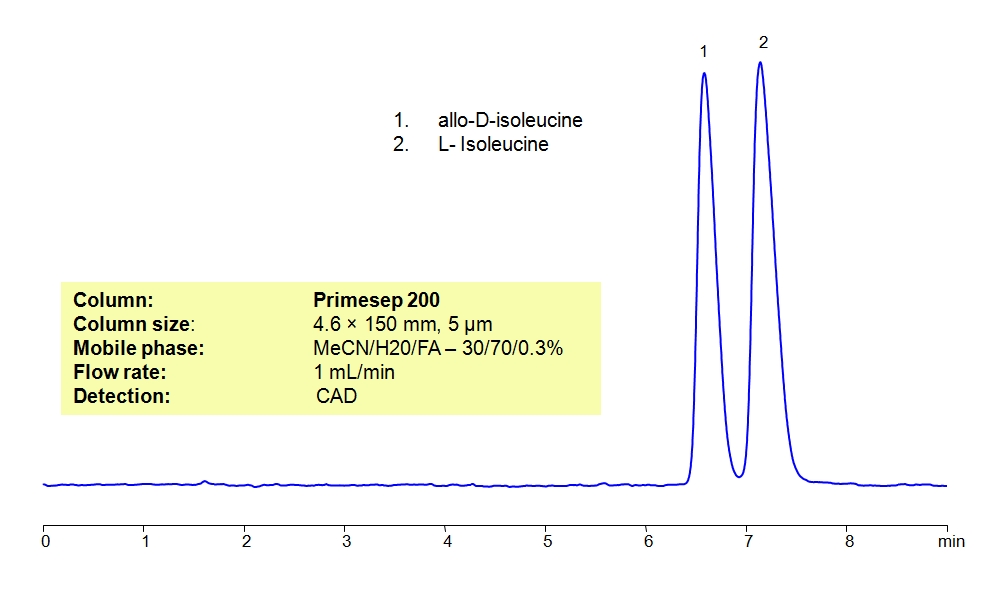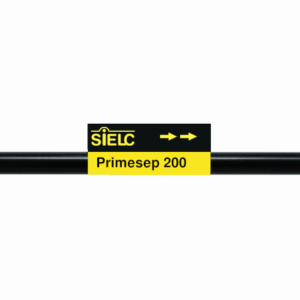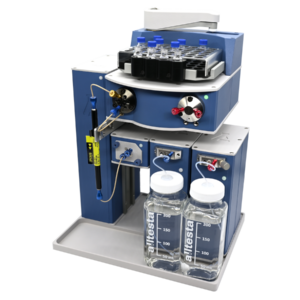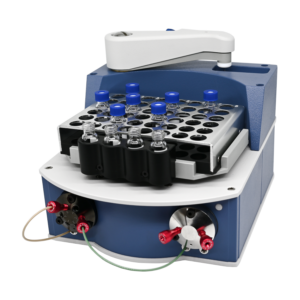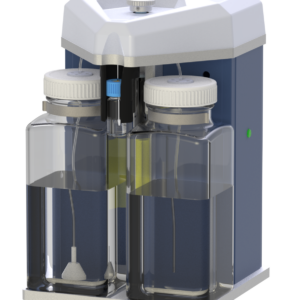HPLC Method for L-Isoleucine, allo-D-isoleucine on Primesep 200 by SIELC Technologies
High Performance Liquid Chromatography (HPLC) Method for Analysis of L-Isoleucine, allo-D-isoleucine
Allo-D-isoleucine is a non-proteinogenic amino acid with C6H13NO2 molecular formula. It is most commonly used in protein synthesis, neuroprotection, and immune modulation. It is also crucial in synthesis of peptides and can support muscle growth and recovery.
L- Isoleucine is a branched-chain amino acid with C6H13NO2 molecular formula. During chemical reactions, it serves as a nitrogen donor. It is also involved in glucose consumption, fatty acid metabolism, and immune functions. It can be found in a variety of animal and plant products, including meat, eggs, dairy, soybeans, lentils, peas, nuts, and seeds. Healthcare providers may encourage athletes and people with muscle atrophy to take it as a supplement. Excessive consumption of it may lead to side effects including nausea, vomiting, and diarrhea.
L-Isoleucine, allo-D-isoleucine can be retained and analyzed using the Primesep 200 stationary phase column. The analysis utilizes an isocratic method with a simple mobile phase consisting of water and acetonitrile (MeCN) with a trifluoroacetic acid buffer. Detection is performed using CAD.
| Column | Primesep 200, 4.6×150 mm, 5 µm, 100A |
| Mobile Phase | MeCN/H2O |
| Buffer | TFA, FA |
| Flow Rate | 1.0 ml/min |
| Detection | CAD (Corona) MS- compatible mobile phase |
| Class of Compounds | Drug, Acid, Hydrophilic, Ionizable, Vitamin, Supplements, Amino acid |
| Analyzing Compounds | Allo-Isoleucine, Isoleucine, Leucine |
Application Column
Primesep 200
Column Diameter: 4.6 mm
Column Length: 150 mm
Particle Size: 5 µm
Pore Size: 100 A
Column options: dual ended
allo-D-isoleucine

